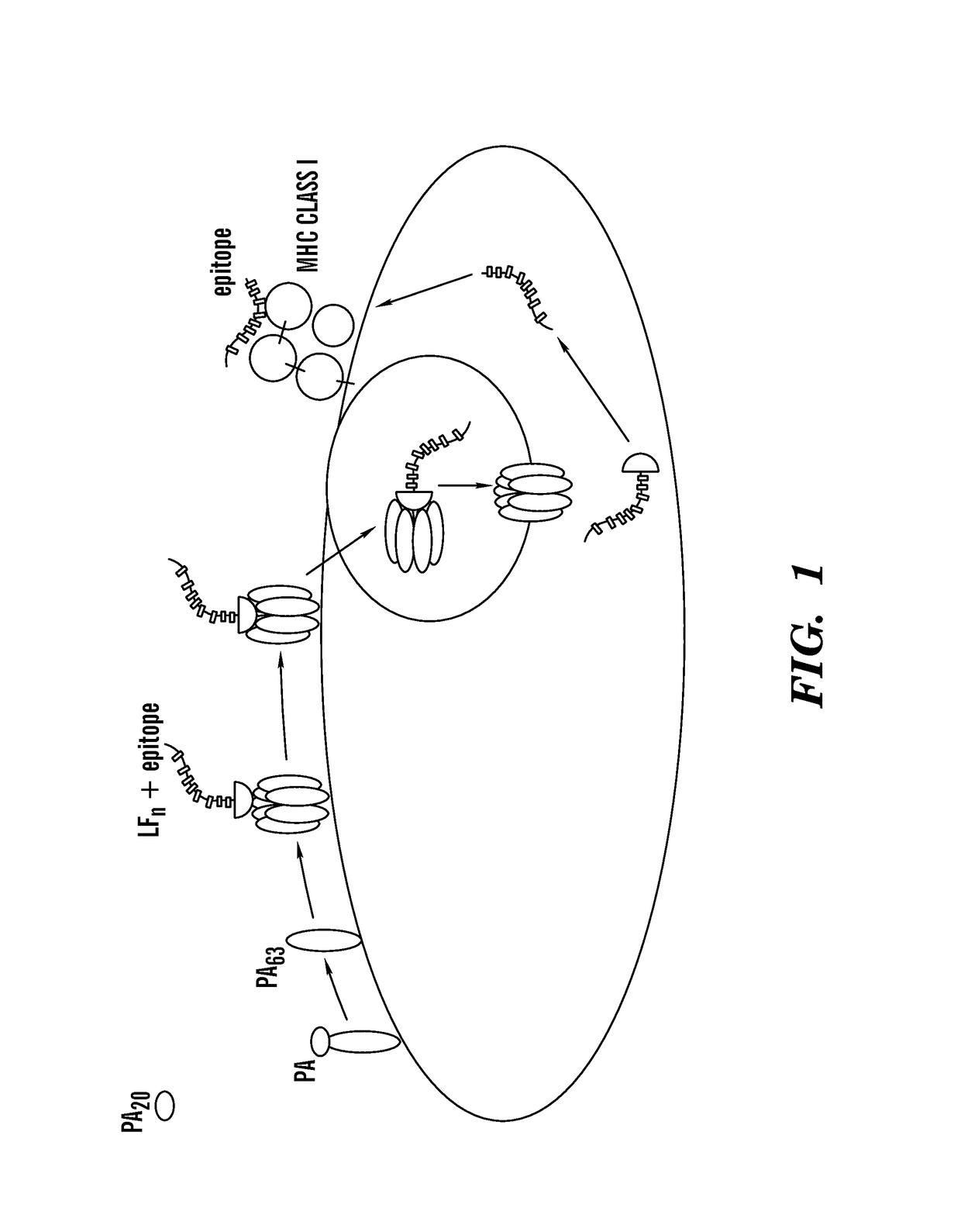Methods and compositions for promoting a cell-mediated immune response
a cell-mediated immune response and composition technology, applied in the direction of antibacterial agents, peptide/protein ingredients, antibody medical ingredients, etc., can solve the problems of poor immunogenicity of some vaccines, not all vaccines and the immunogens in them are equally effective, and the system is restricted in its use as potential vaccines. to achieve the effect of facilitating the display of antigens or fragments thereo
- Summary
- Abstract
- Description
- Claims
- Application Information
AI Technical Summary
Benefits of technology
Problems solved by technology
Method used
Image
Examples
Embodiment Construction
[0089]One aspect of the present invention provides compositions for delivering a target antigen to the cytosol of a cell and uses thereof. In particular, one aspect relates to a composition comprising an LF polypeptide and a target antigen, and methods of use of using such compositions to direct an immune response against an antigen, where the composition comprises an LF polypeptide and a non-linked or non-covalently linked antigen. The LF polypeptide or a fragment thereof function to enhance the efficacy of an antigen to direct an immune response to the target antigen. In particular, the compositions of the present invention comprise at least one LF polypeptide, for example, the N-terminal Lethal Factor (LFn) of a bipartite exotoxin such as B. anthracis, or a fragment or variant thereof, and at least one non-linked or non-covalently linked target antigen.
[0090]Accordingly, one aspect of the present invention relates to a composition consisting essentially of LF polypeptide, for exa...
PUM
| Property | Measurement | Unit |
|---|---|---|
| pH | aaaaa | aaaaa |
| pH | aaaaa | aaaaa |
| population doubling time | aaaaa | aaaaa |
Abstract
Description
Claims
Application Information
 Login to View More
Login to View More - R&D
- Intellectual Property
- Life Sciences
- Materials
- Tech Scout
- Unparalleled Data Quality
- Higher Quality Content
- 60% Fewer Hallucinations
Browse by: Latest US Patents, China's latest patents, Technical Efficacy Thesaurus, Application Domain, Technology Topic, Popular Technical Reports.
© 2025 PatSnap. All rights reserved.Legal|Privacy policy|Modern Slavery Act Transparency Statement|Sitemap|About US| Contact US: help@patsnap.com



